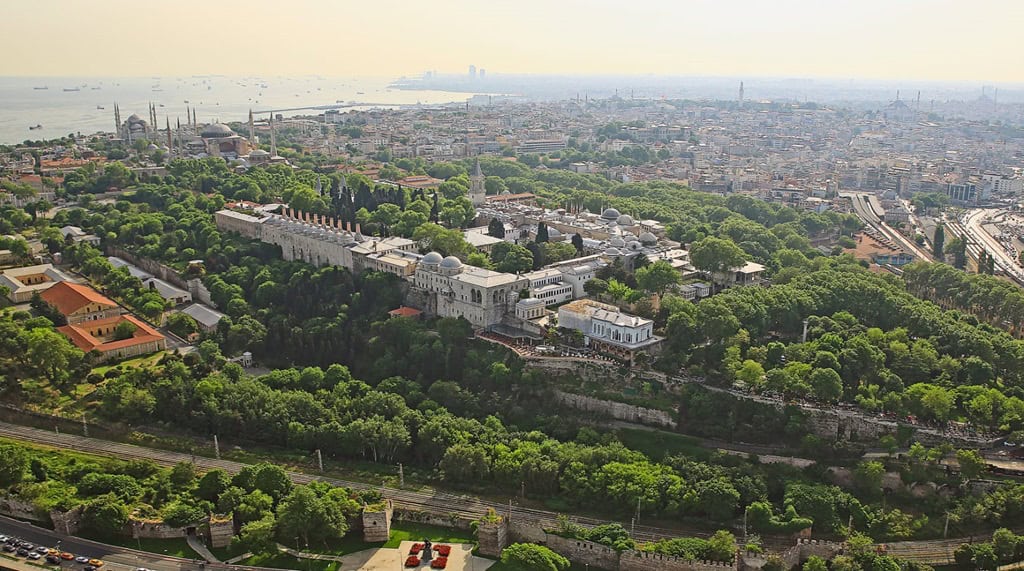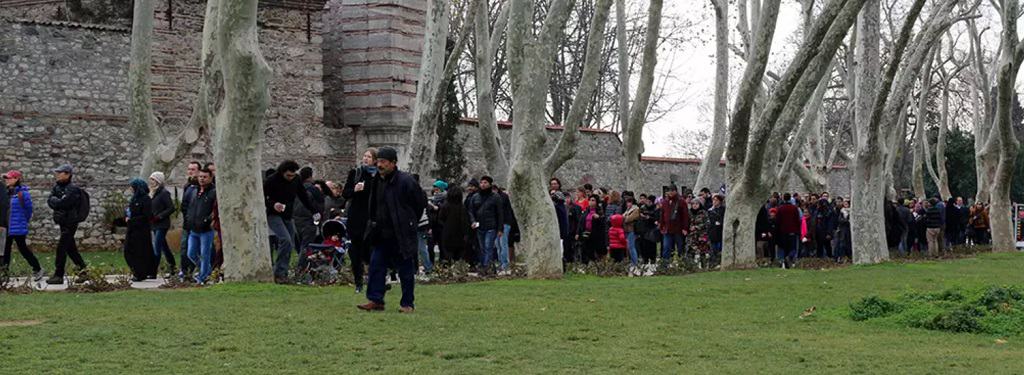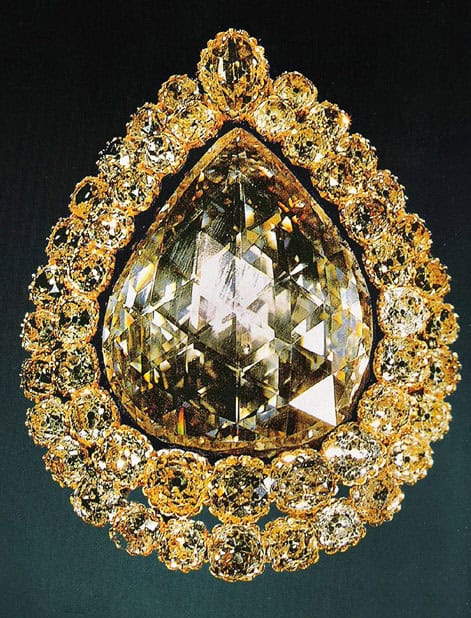Topkapi Palace; tickets, opening hours, entry fee, what to see…
⏰Opening hours, closed days (2025)
Visiting Days and Hours for Topkapı Palace
- Closed Day: Tuesday
- Ticket Office Opening Hours: 09:00 AM
- Ticket Office Closing Hours: 05:00 PM
Public Holidays and Religious Festivals:
- April 23 (National Sovereignty and Children’s Day): Open
- May 1 (Labor and Solidarity Day): Open
- Eid al-Fitr (Ramadan Feast) Day 1: Closed
- Eid al-Fitr (Ramadan Feast) Day 2: Open
- Eid al-Fitr (Ramadan Feast) Day 3: Open
- May 19 (Commemoration of Atatürk, Youth and Sports Day): Open
- July 15 (Democracy and National Unity Day): Open
- Eid al-Adha (Feast of Sacrifice) Day 1: Closed
- Eid al-Adha (Feast of Sacrifice) Day 2: Open
- Eid al-Adha (Feast of Sacrifice) Day 3: Open
- Eid al-Adha (Feast of Sacrifice) Day 4: Open
- August 30 (Victory Day): Open
- October 29 (Republic Day): Open
- New Year’s Day: Open

🚶♂️Skip-the-Line Tickets For Topkapi Palace
During peak seasons (April to December), cruise ship days, Sundays, and public holidays, ticket lines at Topkapı Palace can become quite long. To avoid waiting, you can purchase your tickets online, which also includes an audio guide. 🌟 Alternatively, you can skip the lines by purchasing a combo ticket for the 3 busiest attractions here.

🚋 Transportation: How to Get to Topkapi Palace
Topkapı Palace is located in Istanbul’s Sultanahmet district, within the historic old town area, also known as the Historical Peninsula. Istanbul is a city that spans two continents, and Sultanahmet lies on the European side.
To reach Sultanahmet Square, you can use one of the following transportation methods:
- Take the T1 Tram Line and get off at Sultanahmet Station. From there, it’s a 10-minute walk to Topkapı Palace.
- Use the Marmaray Metro Line, exit through Gate 2 of Sirkeci Metro Station, and enjoy a 15-20 minute walk through Gülhane Park, leading directly to the first courtyard of the palace. Please note that parts of the route feature cobblestone streets and uphill sections.
- Exit from Gate 1 of Sirkeci Metro Station, walk 1 minute to the T1 Tram Line, and take the tram to Sultanahmet Station.
🚍 Public Bus Information: There are no public buses passing directly by Topkapı Palace.
🚕 Taxi Options: If you prefer a taxi, taking the coastal road through the Cankurtaran district will drop you off near the main entrance. However, expect heavy traffic during peak hours (07:00-09:00 AM and 16:30-19:00 PM).

🏰History of Topkapi Palace
Topkapı Palace is the second but largest palatial complex built by the Ottomans in Istanbul. The construction of the palace began in 1453, seven years after the conquest of Constantinople by Mehmet the Conqueror (Fatih Sultan Mehmet). The first palace, constructed of timber in the Beyazıt district, was destroyed by fire, leading to the construction of Topkapı Palace. Originally, the palace was known as “The New Imperial Palace” (Saray-ı Cedid-i Amire) during the Ottoman era.
ASK PRICE AND AVAILABILITY FOR A PRIVATE TOUR GUIDE ∇
The land where Topkapı Palace was founded is the same area where the city of Byzantion was first established. The outer walls of Topkapı Palace were built over the ruined walls of Byzantion. As a result, it is highly symbolic and meaningful to choose the same land where Byzantium, Roman, East Roman, and Byzantine palaces were located in and around.

The palace was built on an area of 700,000 m² and includes an extensive surrounding garden. The palace has a total of 400 rooms, with 20% of the total land consisting of palatial buildings. Today, the museum area covers 80,000 m² (for comparison, Versailles Palace is 67,000 m² with 2,300 rooms). However, architecturally, the palatial buildings are not as magnificent as many people think or expect when compared to European palaces. The magnificence of Topkapı Palace comes from its function, its museums, interior decorations, and location.
Topkapı Palace was used as the first imperial palace until Dolmabahçe Palace was built in the baroque style. The Ottoman dynasty moved to Dolmabahçe Palace in 1856, and Topkapı Palace has been used as a museum since 1924.
Sections

1st Gate and Courtyard
The first gate is called Bab-ı Humayun (Imperial Gate) and the first courtyard is called Alay Meydanı (Cortege Square). This was the only courtyard allowed to enter for the public.
2nd Gate and Courtyard
This important door is called Bab-us-selam (Gate Of Salutation) and the courtyard is called Divan Meydanı (Square of Council) . This door, which is not in the Ottoman architectural style, was built in Hungarian style by the Sultan Suleyman the Magnificent. On the right hand side of the courtyard, there are the kitchens of the palace and a ticket office and on the left hand side are the Imperial Council (Divan-ı Hümayun) and Imperial Stables (Istabl-i Humayun). In addition, entrance to Harem, the most private section of the palace is from this courtyard.
Divanı-ı Humayun and Tower Of Justice; Divan-ı Humayun (Imperial Council) was the high council where state and public affairs were discussed and decided in the Ottoman Empire. The Tower of Justice, which overlooks the Topkapi Palace, is the highest structure of the palace. The tower, located in the state’s headquarters, would have given the message that justice is more important than anything else.
3rd Gate and Courtyard
Babussaade (Gate Of Felicity) is the gate where the ceremonies were helding in front. This is the most important gate in the palace due to the sultans were sitting in front of this door during the ceremonies. It’s also the place where all the important statesman line up during the festive ceremonies, kiss the skirt of the Sultan and receive his tip. it is the Square of Enderun Imperial School. Harem is also part of these structures and can be handled independently as well. In this courtyard, there are also very important departments of the palace such as Chamber Of Petitions (Arz Odası), Inner Treasury and The Room Of Holy Relics and Imperial School (Enderun) etc.
Holy Relics (Kutsal Emanetler)
The priceless pieces of “Holy Relics of Topkapi Palace” brought to Istanbul after the victory of Ridaniye by Yavuz Sultan Selim in Egypt. The exibition is located in the section Privy Chamber (Has Oda).
- The Staff of Moses
- The Sword of Prophet David (Dawud)
- The Robe of Prophet Joseph (Yusuf)
- The Relics of Prophet John the Baptist (Yahya)
- The Cooking Vessel of Prophet Abraham (Ibrahim)
- The Turban of Prophet Joseph (Yusuf)
- The Prayer Rug of Prophet Muhammad
- The Banner of the Prophet Muhammad
- The Bow of Prophet Muhammad
- The Sandals of Prophet Muhammad etc.
The Fourth Courtyard
This is the section that only Ottoman dynasty members, those who serve them and very special guests can enter. In this courtyard there are various pavillions and a terrace overlooking to the Marmara Sea and Bosphorus. The three pavilions are called as Baghdad, Revan, Sofa and Mecidiye. The other structures at the courtyard are the Chamber Of Circumcision, Bower Of Iftaar and Phyisician’s Tower etc.


Harem
Harem, a place full of secrets, is actually the private house of the sultan. The family of the sultan (queen mother, sisters, princess, wives) lived here along with other people like odalisque / concubines, favorites, servants, helberdiers, eunuches etc. The harem in Topkapi Palace has approximately 400 rooms (small or larger). The number of people living in the harem would change from time to time. As an example, during the rule of Selim II the population reached up to 1200 people.
Harem is used between the 16th and 19th centuries. Different sections built and decorated by different sultans reveal the periods of changes of the Turkish palatial architecture and decoration.
Here the 3 important sections of Harem;
- The Imperial Hall (Hünkar Sofrası)
- Queens Mother Quarter (Valide Sultan Dairesi)
- Privacy Room of Mehmed the 3rd




